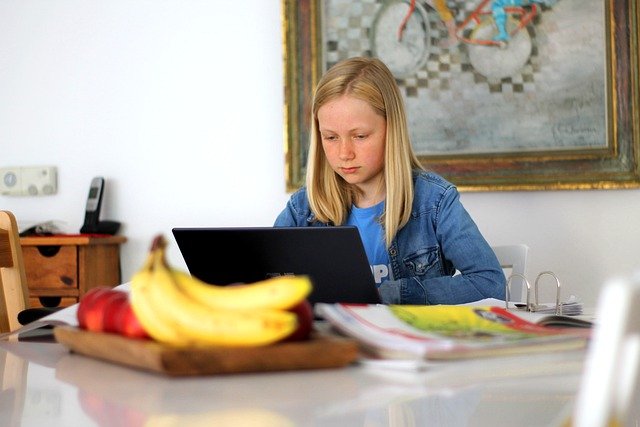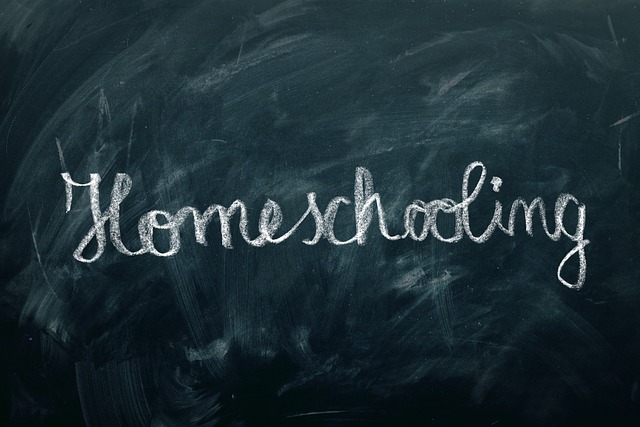The 5 Homeschooling Methods
So you’ve decided to homeschool? Congratulations! But now what? How do you decide on how you want to homeschool? I’m going to go in depth into 5 homeschooling methods, and how to choose the best one for you and you family! Here we go!
When my mom first started homeschooling me when I was in 3rd grade, these homeschooling terms didn’t exist. There was just one term and that was homeschooling. I was homeschooled before it was cool, and before co ops were a thing. I was homeschooled at the time when some homeschooling families thought girls and women had to wear long jean skirts that covered their ankle. Thank goodness my mama didn’t make me and my sister wear that! These homeschooling terms and concepts are still relatively new. That doesn’t mean people were not still using these methods however. I remember my mom doing hands on learning, unit studies, and definitely took an unschooling or eclectic approach to some subjects, and used some straightforward, no nonsense curriculum books for subjects like math. So these methods were definitely still utilized, they just didn’t have a name.
What Is Homeschooling?
Homeschooling is simply deciding not to send your child or children to a regular all day school setting, and educating them at home. They can learn just as easily at home as they can going to school.
Why You should Consider These 5 Things
Before we go into the 5 homeschooling methods, I do want to give you some things to think about and consider BEFORE even deciding which method you want to go with and here’s why. You may decide you want to be the mom with hands on science and art activities every day or frequently because you have this idea that that is the kind of homeschooling mom you WANT to be.
When in reality, your kids have sports on the weekends, and you find that by the time Monday comes around, you’re exhausted and you forgot to research and plan the activities, and get the materials for the activities, so then you have a decision on Monday- carve out some time in the homeschool day to plan activities, and go get supplies if you don’t have them already, (who wants to do that on a Monday?), or feel defeated and beat yourself up because you didn’t do it on the weekend like you wanted to do.
I don’t know about you, but I don’t like either of those scenarios! So that is what I mean when I say, before you decide you want to be the fun schooling or unschooling mom for every subject, please consider these things!
5 Things to Consider
- Your kids- please, please, please take your kids into consideration! Not just the kids you’re homeschooling, but your younger kids too. Consider their temperament, energy, their learning styles, if they have any learning challenges that you know of, or if they have any special needs. Consider all the children that will be with you during the homeschool day! Do you have a busy, high energy toddler or preschooler that you have to keep an eye on all.the.time? I understand! Then your curriculum or teaching style needs to reflect that and take that into account!
- You! Don’t forget to keep YOU in mind! Or if you are not the one that will be teaching the kids, keep the person homeschooling them in mind! Do you have ADHD? Does the person homeschooling them have ADHD? Are you busy on the weekends with commitments and don’t have a lot of time to plan for the next week? Then you probably need to keep things as simple as possible, and you want to consider an open and go curriculum, or one that doesn’t require a lot of planning beforehand.
- Your Environment- where do you want to do most of your homeschooling? At the kitchen table, on the living room floor, on the couch, a homeschool room? Where do you want to store your homeschool books and supplies? Now, you can’t always change your environment. But you can set yourself and your kids up for homeschooling success by considering these things. If you’re feeling overwhelmed because the space you want to homeschool is in complete chaos, then you need to declutter, clear, and clean the space first for a fresh start. Then to set yourself up for the next day, take 5-10 minutes to reset the space and put away books and supplies after school or before you go to bed. That way, you can get right to school in the morning, and you are starting in an organized, semi orderly space. This will become a daily rhythm if you’re doing it every day, and then you won’t have to think about as much, and you can do it on autopilot. Yes please! And your kids can help put their things away too. You’re welcome!
- Your Current Priorities and Committments- If you have other priorities in the morning or when that precious block of learning time is, well consider how important they are! Can you change the time? If not, then you may need to do some homeschooling in the evening, which is ok unless the kids have sports. Homeschooling does need to be a priority too, so remember that. You may have to consider not doing something in the morning, and do school instead so the kids are free for sports or have free time in the afternoons/evenings. Or if you need a break from sports and it doesn’t disrupt the kids too much, then don’t sign them up for sports for a while, and rest in the evenings or do your homeschool then.
- Your schedule- this is similar to your commitments and priorities. Make sure to prioritize homeschooling if its important to you, or other things will become more important. You may need to adjust your schedule. Write down a tentative homeschool schedule with the kids input, and see how that works.
There could be more things you may want to consider, but for now these are the most important ones. I would even encourage you to write down the answers to these questions as that will help you gain more clarity in the next phase of planning which is learning the homeschooling methods, and which ones are the best for you and your family! Now let’s get to those 5 Homeschooling Methods. Let’s do this!

1. Homeschool Method #1- Homeschooling
You may be thinking, isn’t all homeschooling the same? Not quite! Homeschooling is such a general term, and most people think of this type when they think of homeschooling. Homeschooling is just learning the academics (math, reading, writing, spelling, grammar, science, history, geography, etc) at home, or by a parent. Of course I know some children aren’t taught by their actual parent, and that is ok too. There are so many variations of how children are taught, and who teaches them, but none of that really matters! I’m not going to go into every possible scenario and situation, because that isn’t the point of this post. And plus, that would take for-e-ver!
Regular homeschooling is the type or the method that uses textbooks, or curriculum books, and is more scheduled. This is not to say that they don’t use other methods too, because lots of standard homeschooling families do. However, they mostly teach from a book, and they may even do quizzes or tests periodically to see how the child is doing, or if they are retaining the information, etc.
Pros– Some pros of this type of schooling is you may not have to prepare very much beforehand, and as long as you have a bag or a backpack, it’s easy to take school on the road or to a playground/park.
Cons– Some cons are some of the text books can be a bit big and overwhelming, and there may be some topics that are great, and others that your kids aren’t interested in at all. There may even be controversial topics in a textbook that you the parent don’t agree with. So definitely check out reviews, ask people who use the curriculum if they will let you borrow or look at their books, and lots of curriculum websites have sample pages you can look at before buying.
Some misconceptions of standard homeschooling by is the belief that kids do school “just like they would at a regular school” with text books and all, they sit at a desk or a table without getting up a lot, or that they are on a tight schedule, and are not very flexible or adaptable.
When in reality, even regular homeschoolers who use textbooks also do creative projects and hands on activities to further apply their book knowledge, they can do school anywhere (my 13 year old’s favorite homeschooling spot is the couch) and yes, even parents can teach their child higher level skills! And if they get to a point where they are advancing and they aren’t sure how to teach algebra, or geometry, or calculus (this is me) there are online programs they can take to advance their skills, you can hire a tutor, or take them to a class. Lots of churches or the YMCA teach classes in the county I live in, so ask around!
2. Homeschool Method #2- Unschooling
Unschooling is just what it sounds like- unschooling! The prefix un means “not” so unschooling basically means not schooling!
But hold up! Don’t get all “what? they don’t learn and do any school?” on me.
This homeschooling type is very go with the flow, not as structured, and goes on lots of field trips! Again, this isn’t to say that the other types don’t go on as many field trips (they may), but learning through nature and more hands on experiences is more of a priority to unschooling parents and families! This also plays out in the form of no set schedule every day, and a very go with the flow mindset about learning.
They value kinesthetic learning, and may even do unit studies for most of the curriculum/learning instead of textbooks. They may piece together the curriculum from several different sources, instead of just buying a whole curriculum set by the same company.
Pros: This type of homeschooling may be cheaper depending on what they are using to learn, or if they are buying unit studies on a website, but usually those are not that expensive. If they are utilizing the library, this can get even cheaper. Most unschooling families probably pay more for experiences and hands on learning materials for art or science instead of books.
Cons: The only con I can think of is it may be hard to know what level your child may be on with this type of homeschooling, since they may not be doing worksheets, or curriculum books. So if this type sounds like you, then make sure you have a good way of checking their progress a few times a year by using an oral quiz or answers, a worksheet, a test, or a multiple choice type test.
3. Homeschooling Method #3- FunSchooling
This type is exactly like it sounds- Fun! This is what happens when you bring fun and school together! This type does have a lot of similarities to Unschooling, and some may even argue that unschooling and funschooling are one and the same.
However you want to group them together, funschooling is an amazing homeschool method for ecclectic homeschoolers! This type does hands on experiences too just like Unschooling, and they add in fun touches like games, journals, and lots of art and student led activities! Get the Fun Schooling Journals here, and you can buy them on amazon as well!
Pros: The pros are that its definitely more fun than textbook learning, and if you buy fun schooling journals from this website, you can buy pdf versions that you can print off for different children, and keep them forever! Every child has their own journals based on their interests. So it’s very individualized for each child, so they don’t have to learn all the same things. It’s very student led, and based on the students current passions and interests. They can dive deep into a topic of their choice for as long as they want to, whereas in a regular school setting, they have to move on to another topic whether they like it or not.
Cons: The only cons I have on the homeschooling journals, (this is nothing against the journals themselves, because I love them!), are that if you have a child that does not like to write, then it may be difficult for them because the journals have lots of pages for writing, copy work, facts you’re learning and researching, etc. They also have lots of pages for drawing, so there is that too. But, I found it difficult to get my daughter excited to do the journals after a while because she didn’t like to write, and she couldn’t do research independently because she has mild dyslexia.
Also, if you are buying the paper books for each child, that could get pricey. So I recommend buying most of the books on a pdf so if another child wants to do that journal at another time, you already have it, and all you have to do it print it out. However, if you have just one child, then get the paper journals because I’m telling you-they are absolutely gorgeous, and I cannot praise them enough for their beautiful and artistic journals!
Learn more about this artistic family and Christian based company in my leader round up post here!

4. Homeschool Method #4- Interest Based or Child Led Homeschooling
Both of these terms are essentially the same concept, and very similar to unschooling, funschooling, and ecclectic homeschooling.
This is the most easy and straightforward approach to homeschooling, because you aren’t doing the planning! You ask your children what they want to learn, or what their passions or interests are, and then gather materials and supplies based on that. You can do this by:
- getting books on their chosen topic either at the library or buying them,
- using some Funschooling journals I mentioned above on their interests, and
- using other supplemental activities such as games, youtube videos, documentaries, field trips, etc.
- Also, try to find someone to teach your child the ropes on the topic of their interest! You just never know, that could turn into a job or career further on down the road!
Pros: There are lots of pros to this method such as the kids will be more excited about the school day because they are (mostly) learning about things that interest them. So less pushback about doing school. The children get an opportunity to really dive into their interest, get better at it, and become an expert at it. I they are older, have them plan out their days and make their own lesson plans.
Cons: The kids might be so excited about their topics of interest, but they may find it difficult to go from a pleasant subject, to a more unpleasant one like math, reading, language arts, writing, copy work, etc. If they are small, then the lesson plans are solely on you. Get their input and what they want to learn, but ultimately, you are the one that is going to have to plan it, gather materials or supplies, get library books or resources for them, and do all of the general research related work.
5. Homeschooling Method #5- Eclectic Homeschooling
This last homeschooling method, is all the homeschool methods combined! Eclectic means “deriving ideas, style, or taste from a broad and diverse range of sources.” So basically you’re taking homeschooling, unschooling, funschooling, and interest based/child led learning, kind of like “eating the meat and spitting out the bones” concept. You choose what you like out of each method, and just use what works for you and your family!
That means some days, you may work more from a textbook, and another day, you’re incorporating more games and youtube videos or documentaries to get a more hands on or kinesthetic approach to what you just learned in the textbook. Lots of field trips, science experiments, unit studies, deep dives into a topic of interest, nature studies, playing outside, art, drawing, painting, textbooks and books of interests, etc.

The Last Things You Need to Know About The 5 Homeschooling Methods
You may be thinking, “Tara, the last 4 homeschooling methods sound awfully alike! Aren’t they one and the same in a way?”
To that, I say yes the last 4 DO sound alike, because they are a lot alike! They can be one and the same, however you want to look at it.
I hear about these methods of homeschooling frequently, and I want to give you the most current, up to date homeschooling terms so you have all the information on each method.
However, don’t get stuck on a label! Don’t let a label corner you into thinking that you must be this kind of homeschooling mom, so therefore I can’t do this in my homeschool. That is a limiting belief dear mama’s!
You can be any type of homeschool family you want, and you can do them all, even all in one day! Do you know why? Because this YOUR homeschool. This is YOUR families life. This is YOUR kids life and homeschool. God entrusted you to be their mama, and he entrusts you to be their advocate, and their guiding light. YOU get to choose how you want your children to be taught, how you want them to learn, and WHAT you want them to learn. YOU get to choose the energy in your homeschool, YOU get to set the tone in your homeschool, and YOU get to nurture your children, and instill a love of learning.
If you feel called by God (or even if it’s not a calling but it’s the best option at the moment), to homeschool your children, then by golly I hope you get to do it! God will give you the wisdom to teach and guide your precious children, and you can choose to teach them however you choose. You don’t have to be boxed in or have a label put on you by anyone.
Dear Mama, you’re going to do great! I just know it.
If this has blessed you in any way, please leave a comment and let me know- Do you homeschool already, or is it your dream to homeschool?
Thank you for reading, and I’ll catch ya on the flip side!
XOXO Tara




One Comment